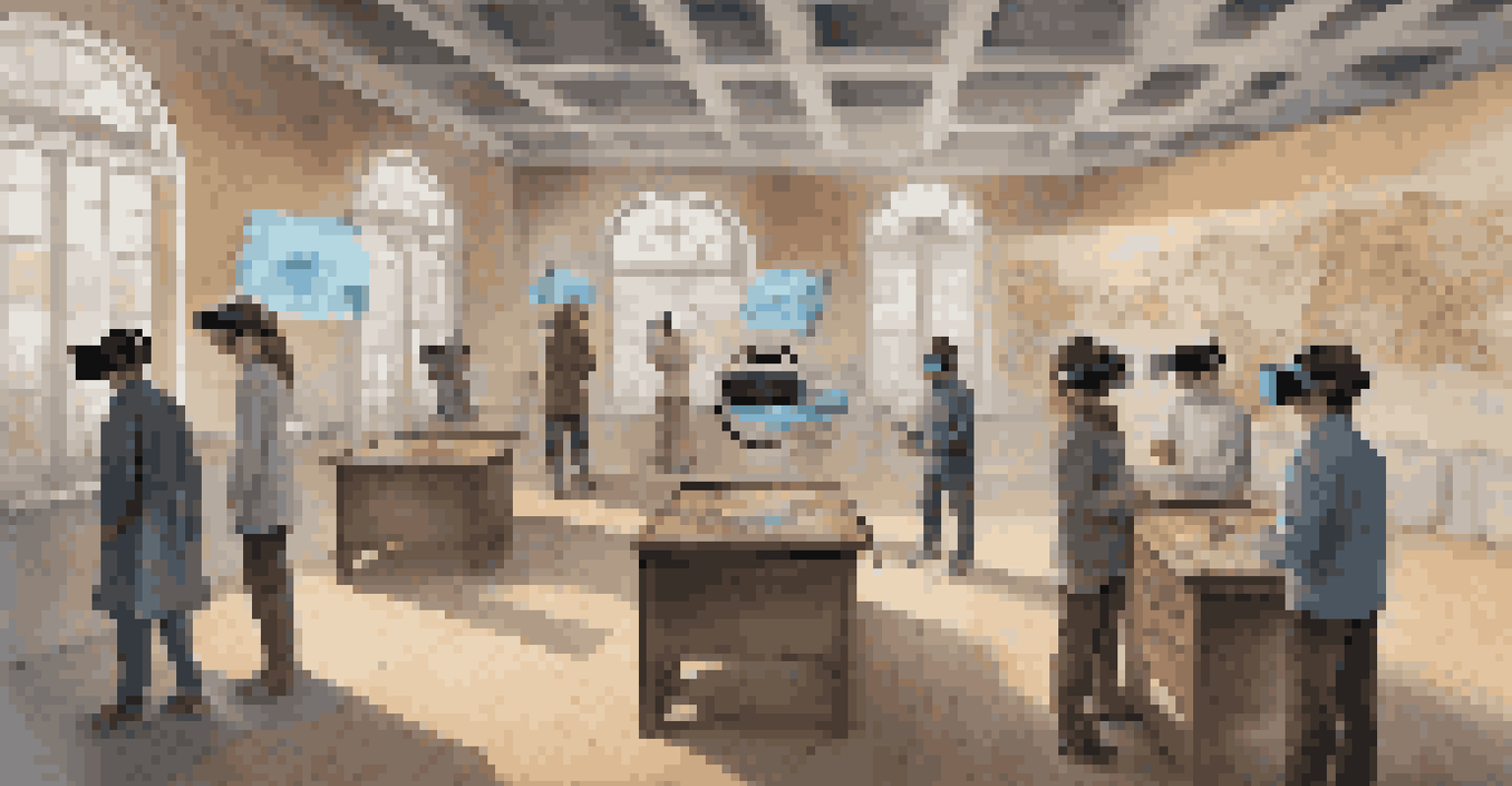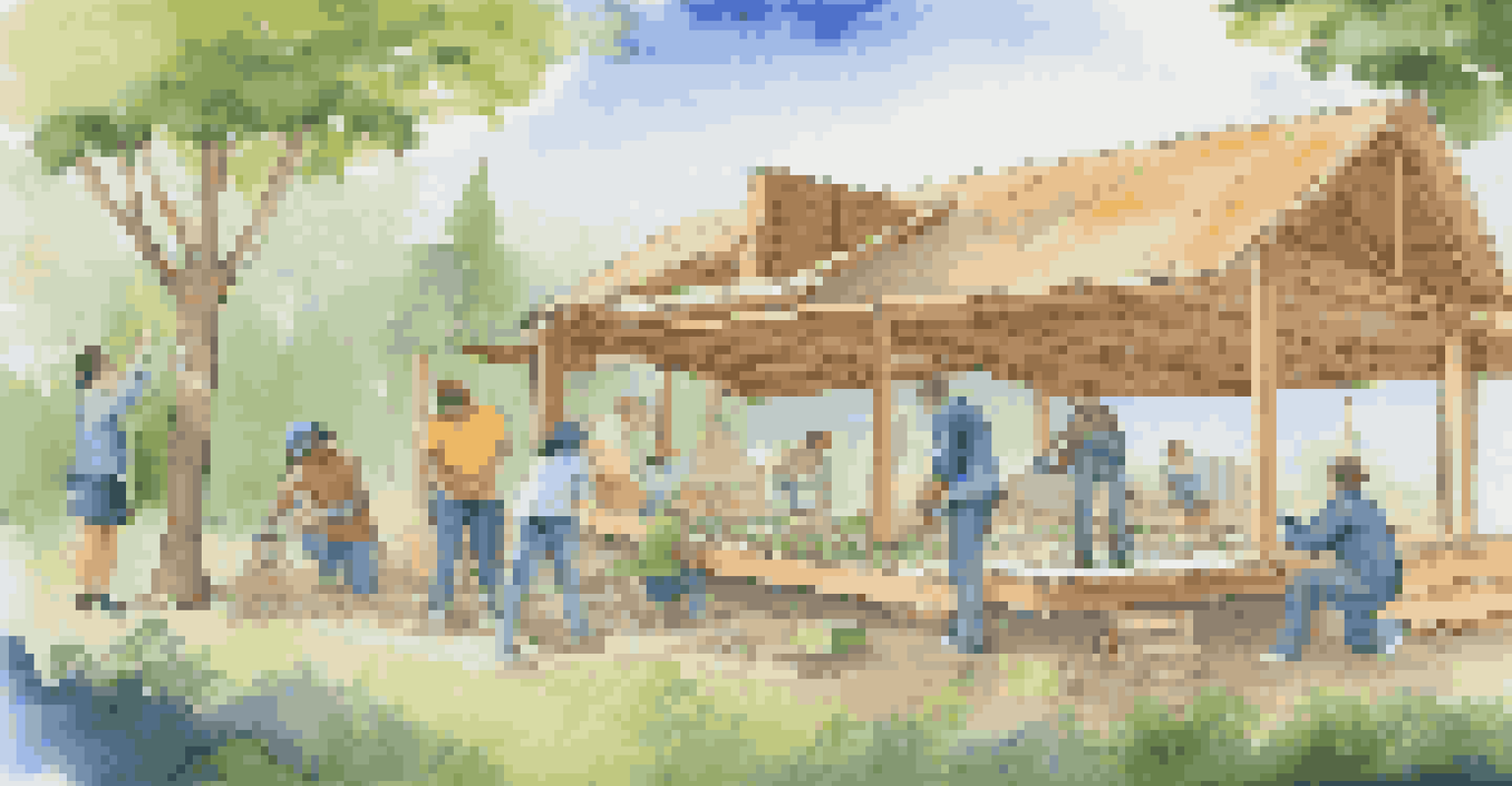Exploring Cross-Disciplinary Strategies to Enhance Learning

Understanding Cross-Disciplinary Learning Benefits
Cross-disciplinary learning involves integrating knowledge and skills from different fields. This approach not only enriches student learning but also fosters critical thinking and creativity. By seeing how various disciplines intersect, learners can develop a more holistic understanding of complex topics.
The greatest innovations are born from the collaboration between different disciplines.
For example, a project that combines art and science can help students appreciate the role of creativity in scientific inquiry. When students engage with diverse perspectives, they’re more likely to retain information and apply it in real-world scenarios. This method can also ignite a passion for learning, making education more enjoyable.
Ultimately, cross-disciplinary strategies can break down traditional barriers in education. Students become more adaptable and prepared for the complexities of the modern world, where problems often require multifaceted solutions. Embracing this approach can lead to better academic outcomes and personal growth.
Creating Collaborative Learning Environments
Collaboration is key when it comes to cross-disciplinary strategies. By encouraging teamwork among students from different backgrounds, educators can foster an atmosphere of shared knowledge and diverse ideas. This collaborative spirit not only enhances learning but also builds essential social skills.

Imagine a classroom where students from science, technology, engineering, and math (STEM) work alongside those from the arts and humanities. Together, they can tackle real-world challenges, such as designing sustainable cities or creating ethical technology. Such collaborative projects allow students to learn from each other’s strengths.
Benefits of Cross-Disciplinary Learning
Integrating knowledge from different fields enhances critical thinking, creativity, and real-world application.
Moreover, these environments promote a sense of belonging and community. Students feel valued and empowered to contribute their unique perspectives, which can lead to innovative solutions. When learners collaborate, they not only enhance their own understanding but also enrich the educational experience of their peers.
Integrating Technology for Cross-Disciplinary Learning
In today's digital age, technology plays a crucial role in cross-disciplinary education. Online platforms and tools allow students to connect and collaborate beyond the confines of a traditional classroom. This access to various resources can enhance creativity and broaden learning opportunities.
Education is not the filling of a pail, but the lighting of a fire.
For instance, virtual reality can immerse students in historical events while allowing them to explore scientific principles simultaneously. Such experiences create a more engaging and interactive learning environment. Technology can also help in managing group projects across different disciplines, making collaboration seamless.
Additionally, educators can use data analytics to tailor learning experiences to individual students’ needs. By understanding how learners engage with content from various fields, teachers can refine their strategies and support deeper learning. Technology, when integrated thoughtfully, can enhance cross-disciplinary education significantly.
Project-Based Learning as a Cross-Disciplinary Tool
Project-based learning (PBL) is an effective method for implementing cross-disciplinary strategies. In PBL, students engage in hands-on projects that require them to apply knowledge from various subjects. This approach encourages active learning and helps students see the relevance of their education.
For example, a project that involves building a model of an eco-friendly house can incorporate concepts from science, mathematics, and art. Students will need to research sustainable materials, calculate dimensions, and design aesthetic features. This integration of disciplines not only deepens understanding but also makes learning more enjoyable.
Role of Collaboration in Learning
Collaborative environments foster diverse ideas and social skills, enriching the educational experience for all students.
Moreover, PBL promotes essential skills such as problem-solving, communication, and critical thinking. Students learn to work collaboratively, think creatively, and take ownership of their learning. These skills are invaluable in today’s workforce, making PBL a vital strategy for cross-disciplinary education.
The Role of Educators in Cross-Disciplinary Teaching
Educators play a pivotal role in successfully implementing cross-disciplinary strategies. They need to be facilitators who guide students in exploring connections between different subjects. By modeling interdisciplinary thinking, teachers can inspire students to make their own connections.
Professional development opportunities can help educators learn effective methods for integrating disciplines. Workshops focused on collaboration, project-based learning, and technology use can equip teachers with the necessary tools. This ongoing support is crucial for fostering a culture of cross-disciplinary learning within schools.
Additionally, educators should encourage a growth mindset among students. By promoting resilience and curiosity, teachers can help students embrace challenges and explore different perspectives. When students feel supported by their teachers, they are more likely to engage deeply in their learning.
Assessing Cross-Disciplinary Learning Outcomes
Assessing learning outcomes in a cross-disciplinary context can be challenging but rewarding. Traditional testing may not fully capture the depth of understanding that comes from integrated learning. Instead, educators should consider alternative assessments that showcase a student's ability to synthesize knowledge from multiple fields.
For example, portfolios or presentations can provide insight into a student’s learning journey. These assessments allow students to demonstrate their skills and knowledge in a more comprehensive manner. They can also reflect on their collaborative experiences and what they’ve learned from working with peers.
Challenges in Cross-Disciplinary Education
Resistance to change and equitable access to resources are common hurdles that educators face when implementing cross-disciplinary strategies.
Moreover, feedback should emphasize the process of learning rather than just the final product. By recognizing effort, creativity, and problem-solving abilities, educators can encourage a deeper engagement with the material. This approach nurtures a love for learning and helps students appreciate the interconnectedness of knowledge.
Challenges and Solutions in Cross-Disciplinary Education
While cross-disciplinary strategies offer numerous benefits, they also come with challenges. One common hurdle is resistance to change within educational institutions. Some educators may feel comfortable with traditional teaching methods and hesitant to adopt new approaches.
To address this, it’s important to provide ongoing support and training for educators. School leaders can create a culture that values innovation and collaboration, encouraging teachers to experiment with cross-disciplinary strategies. Additionally, sharing success stories can inspire others to embrace these methods.

Another challenge is ensuring equitable access to resources for all students. Schools must strive to provide the necessary tools and materials to support diverse learning experiences. By fostering an inclusive environment, educators can ensure that all students benefit from cross-disciplinary learning opportunities.